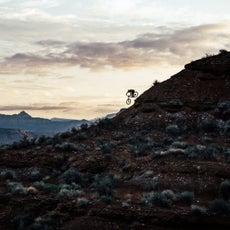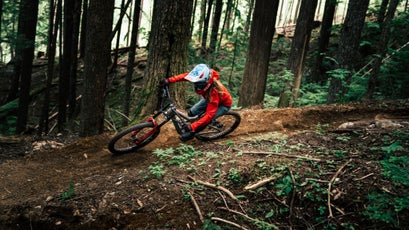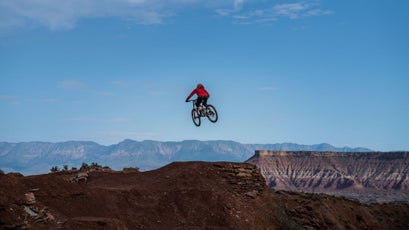Casey Brown Is Rewriting the Rules of Mountain Biking
She’s already established herself as one of the most talented female mountain bikers in the world. And now she's aiming to make history.
With lightning striking over the desert, Casey Brown’s first run down an exposed, 30-degree ridgeline 15 miles outside of Utah’s Zion National Park is tentative. She’s riding the brakes, setting up each six-foot jump carefully, getting a feel for the dirt. Messing up would mean crashing off of a 20- or 30-foot drop and, at best, cartwheeling through loose rock.
Once down safely, Brown, an easygoing 28-year-old vegan from Revelstoke, British Columbia, shoulders her 30-pound downhill bike and kick-steps in the Mars-like soil, hiking back up as the electrical storm gathers energy in the distance. She hits the line again, smoother this time, then hikes for a third pass. Now, with the storm nearly upon her, she lets the bike flow beneath her, tracing the sinuous line, pumping through compressions and floating off a series of six-foot drops. She cruises down to a waiting pickup truck and, beaming, exchanges a round of high-fives. “That was so much fun,” she says.
The Explorers Series
This 2-part series, presented by Coors Light, celebrates adventurers like Casey Brown who are making their mark on the world.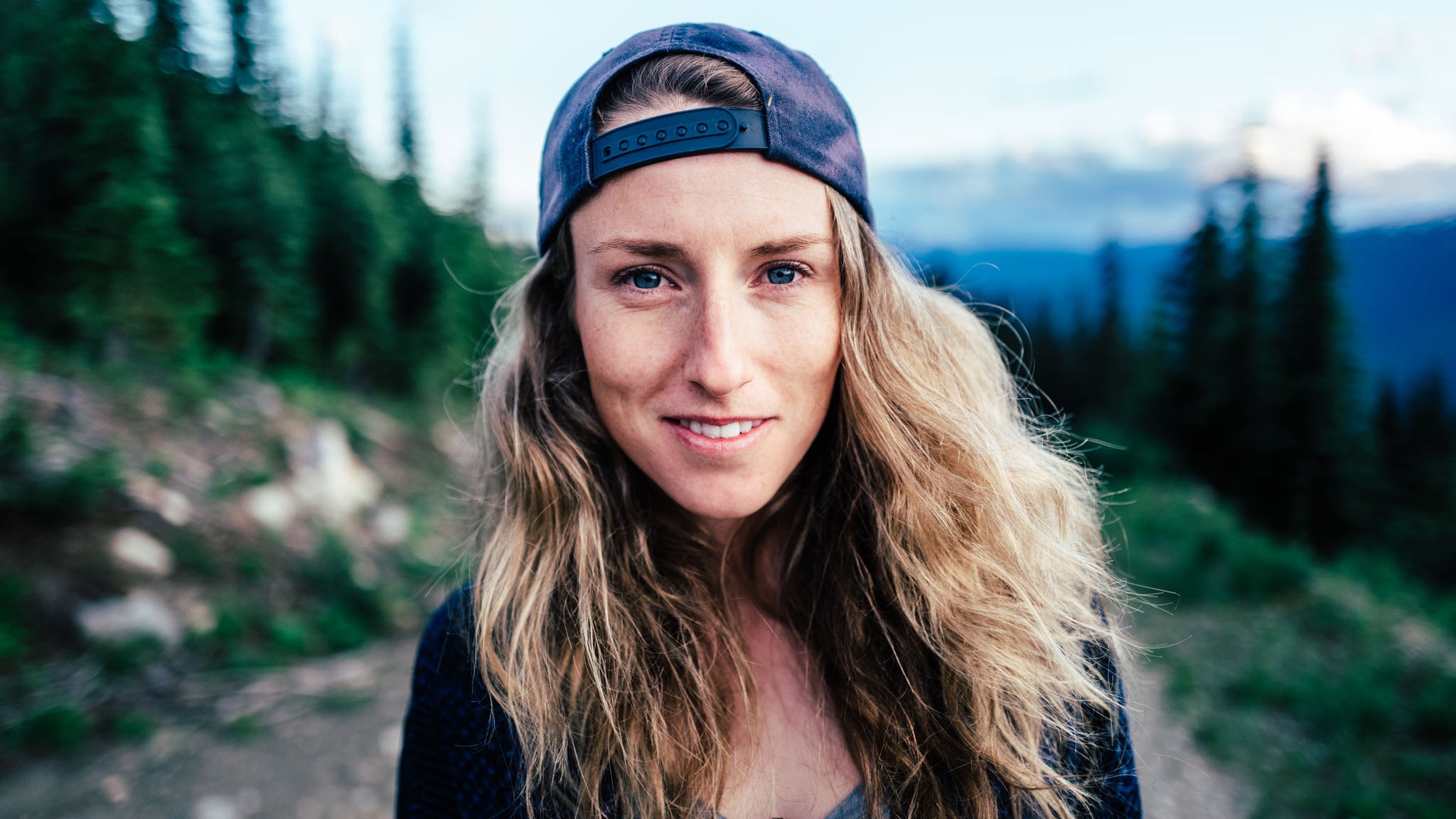
It‚Äôs mid-July, and the ridge Brown just descended is the site of the Red Bull¬ÝRampage, the most challenging and difficult mountain biking event in the world. No woman had ever ridden that line‚Äîand there are dozens more like it, including many that are harder, steeper, and more dangerous. And if Brown has her way, she‚Äôll be the first woman to ride those, too. Her goal is as simple as it is daunting: to become the first woman to compete in Rampage.
Brown, a native New Zealander who has lived in Canada for the past 16 years, is one of the fastest downhill and enduro mountain bike racers in the world. She has notched top finishes in downhill and, more recently, its sister discipline enduro, which involves descending more remote backcountry trails. But because ripping down mountains at 50 miles per hour isn't quite crazy enough for Brown, she is eyeing even bigger challenges. That’s why she’s in Utah, sizing up the course for the invite-only competition, the apex event in big-mountain freeride.
In freeride, mountain biking’s most dangerous and most spectacular discipline, riders send big lines, in big terrain, with big consequences. Whereas slopestyle and downhill riders follow courses and hit machine-built jumps, the freeriders who test themselves at Rampage hit similar speeds and pull similarly massive air out in the real world, on natural terrain. This unique style of freeriding happens in places with cliffs, loose rock, and sketchy landings—places where mistakes mean ghastly crashes. It’s the sport’s version of big-wave surfing, the most extreme form of an extreme form of mountain biking, and it attracts riders with huge risk tolerances. Until Brown, those riders were almost all men. “It’s so important to have goals that might scare you,” she says. Freeride is about “overcoming these insane fears.”
Brown grew up in Barn Bay, on the west coast of New Zealand‚Äôs South Island, in the most remote homestead in the country.¬Ý‚ÄúIt was pretty gnarly to live there,‚Äù Brown says. ‚ÄúBut I have more character now than I would if I didn't grow up there. We raised each other.‚Äù
In 2002, she moved to British Columbia, where she learned to mountain bike, at first on heavy, clunky bikes. Then she got a real mountain bike, with front suspension and brakes that worked. A few years later,¬Ýshe won the first downhill race she entered.¬Ý
Because ripping down mountains at 50 miles per hour isn't quite crazy enough for Brown, she is eyeing even bigger challenges.
From there, Brown was hard to stop. Soon she was winning events at the bike competition/festival Crankworx, and in her first-ever World Cup downhill race, she finished sixth. “It was crazy,” she says. “I didn't think I was fast, and every time I got a good result, I thought they had made a mistake on timing.”
Those early successes opened doors. Brown picked up full-time sponsors and traveled the world racing downhill for three years. But by 2015 she'd soured on the culture of pro downhill racing, where too many people around her seemed more interested in partying than racing seriously. Later that year, despite her success, she quit downhill. “I was done,” she says. “And I wanted out. Anything was better at that point.”
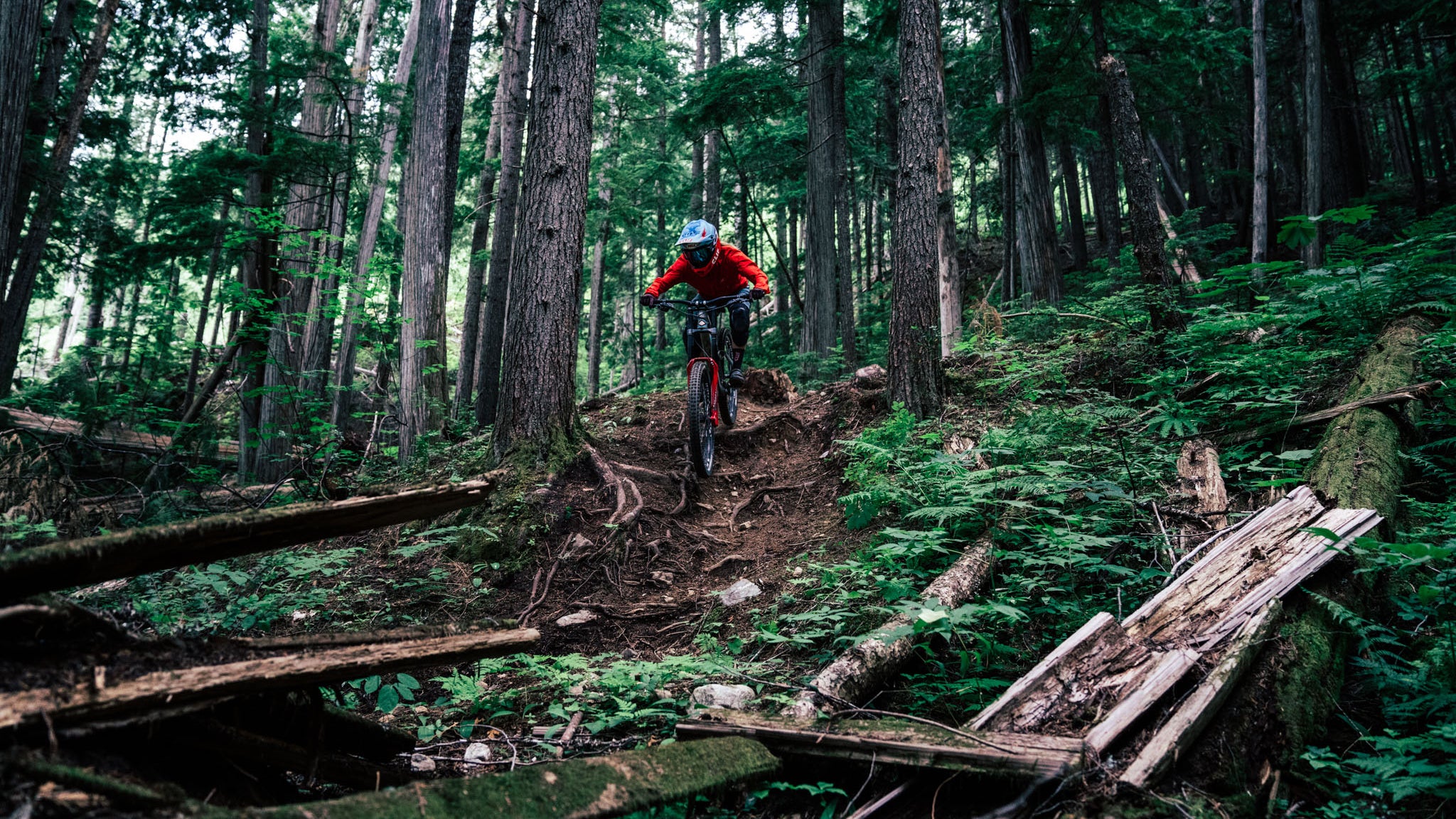
Although a few dozen men ride professionally as freeriders, few women earn a living outside of the race circuit. Leaving the World Cup put her career in jeopardy. But when Brown let her sponsors know that she was done racing but not done riding, they remained supportive. Brown could suddenly focus on the kind of riding she finds most meaningful: fun, playful laps in Revelstoke, filming and sending big lines. “For me, it’s more about how you ride the trail,” she says. “Not taking the fast line, taking the fun line.” As freeride’s popularity grows, Brown is becoming its leading female figure.
Each year, Brown migrates south from Revelstoke to Utah to ride the 1,000-foot-tall sandstone mountains where Rampage happens each autumn. Rampage’s extremity is matched by its history of injuring competitors. Riders launch off 65-foot cliffs and get inverted across 70-foot-wide gaps. Nearly every year someone gets hurt. In 2013, two riders broke femurs, and in 2015 a rider was partially paralyzed. “It’s so exposed that you have to be calculating,” says Brown.
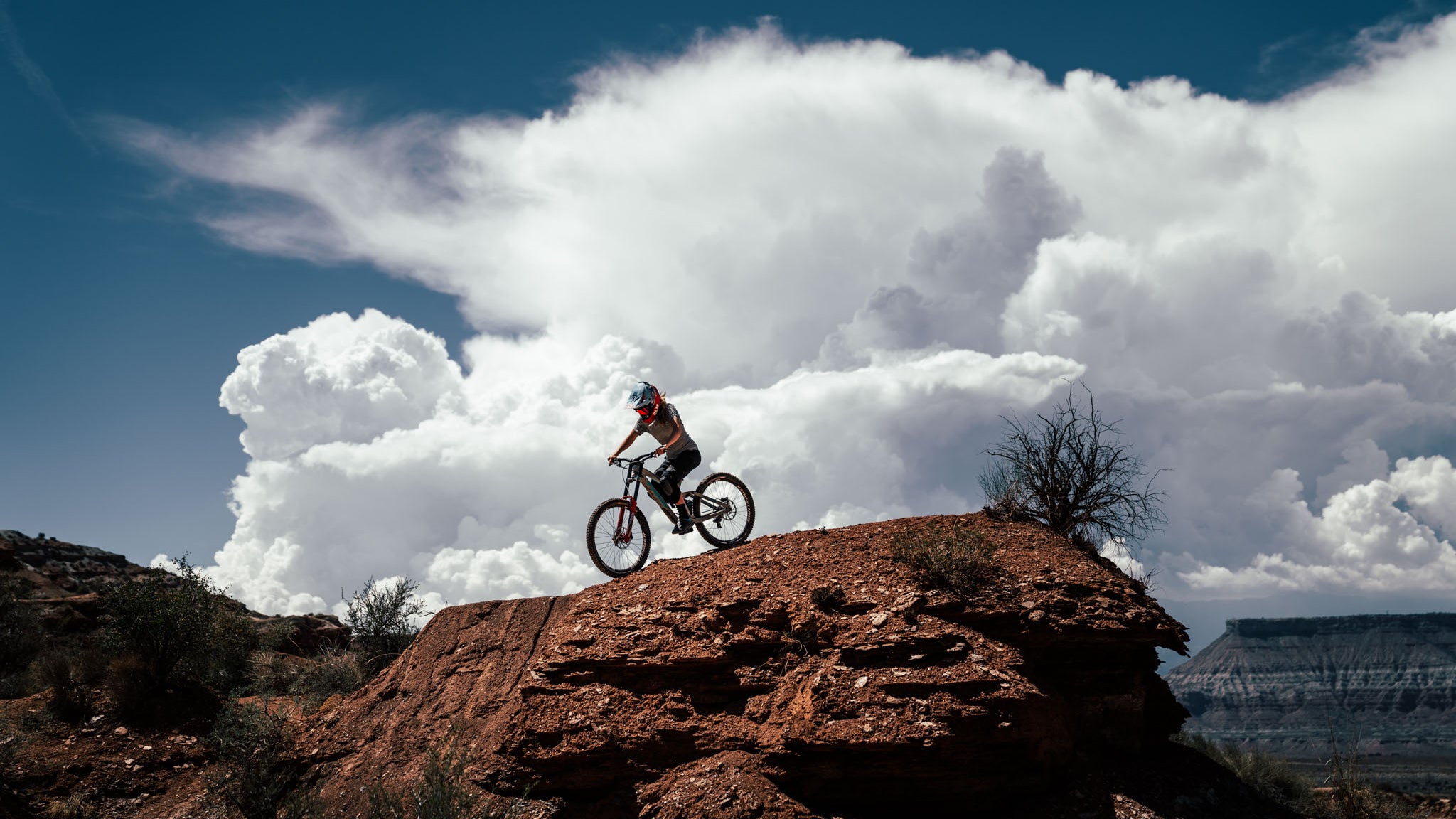
Although calculated and focused on safety, Brown hasn't hopped up from every ride unscathed. Ask about her scars and she‚Äôll tell you about the¬Ýtime she¬Ýcracked her teeth or the¬Ýtime¬Ýshe¬Ýbroke ribs or lacerated her liver. But she's kept at it. Riding serious terrain is about managing fear, she says, ‚Äúbecoming almost friends with fear. It‚Äôs important to have goals that might scare you a little bit.‚Äù
In early August, Brown found out she hadn't been invited to this year's Rampage. She was disappointed but not surprised. Brown understands that rewriting the rules for women in mountain biking is a process. ‚ÄúWhat I‚Äôm doing is a stepping-stone,‚Äù she says, and she has no plans to stop pursuing her goal. ‚ÄúI just don‚Äôt see what‚Äôs really stopping me.‚Äù ¬ÝShe‚Äôll keep coming to Utah, attempting lines that most people thought only men would try. ‚ÄúI‚Äôve felt the limitations and seen the fear that other highly skilled women have,‚Äù she says. ‚ÄúI want to show the younger generation of riders what can be done on a bike.‚Äù
Casey's adventurous outlook and passion to never give up, even in the face of insurmountable adversity, are the reasons Coors Light considers her a restless spirit worth celebrating. Casey has an insatiable thirst for more, to explore and ride new terrain. But it's her vigor and sharp focus on what‚Äôs next‚Äînot just for her, but for the sport itself‚Äîthat is so inspiring.¬Ý



